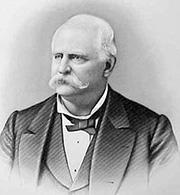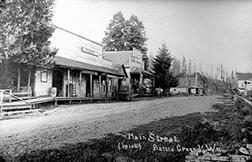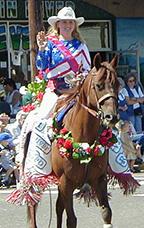Mystery and Mayhem: The Intriguing History of Battle Ground
By Robert Matsumura, Contributing Writer

For many Northwest residents the name Battle Ground is a familiar one. This town just northeast of Vancouver is assumed by many to have derived its name from a historic battle waged at the location. The truth, however, is far more complex, tracing back to a series of events in the mid-19th century, when Washington was but a territory of the United States and relations between white settlers and Indigenous were violent.
In 1855, in response to white settlers’ anxiety over potential threats of Indigenous attacks, a band of Klickitat Tribe residing near the mouth of the Lewis River was relocated to Fort Vancouver by soldiers. Recent Indigenous uprisings, notably the Yakama Indian War of October 1855, had stoked fear among white settler communities near the Columbia River of imminent hostility from the native peoples. Although Clark County had been relatively free of conflict with tribes in the area, white settlers were on edge, their apprehension fueled by inflammatory articles published in Portland and Vancouver newspapers. When a detachment of soldiers was sent from the fort to establish contact with the Klickitat at the Lewis River, they encountered around 30 warriors, their wives, and children. Contrary to local perceptions, the Klickitat band was peaceful and frightened of the newcomers. The soldiers, under the command of Judge William Strong, persuaded the Klickitat band to surrender arms and relocate near the fort. Strong commented in a letter to the editor of the Oregonian: “I think there is no danger now to the settlements on the Columbia west of the Cascades… we need not apprehend harm to our families from them.”

Whether due to fear from settlers or the threat of internment, a group of Klickitat, under cover of night, slipped away to central Clark County. Ala rmed that these Indigenous might join up with the larger Yakama uprising, Strong and a company of men from the fort set out in pursuit and soon caught up with them. Despite high tension on both sides, Strong, and the leader of the Klickitat band, Chief Umtuch, reached an agreement: the Klickitat would peacefully return to the fort the next day. However, the bloodless negotiation was broken shortly thereafter by the discovery of Chief Umtuch’s dead body. To this day, the identity of his murderer remains a mystery. Despite the death of their chief, the Klickitat warriors honored the agreement of their chief and peacefully returned to Fort Vancouver Upon returning to the fort, however, Strong came under criticism for allowing the Klickitat to remain at large—that he had been too soft and fearful of reprisal. Mocking Strong and his men for their perceived cowardice, women at the fort presented him with a red petticoat, a banner for his unit to denote their shame. When the Klickitat showed up a few days later, Strong and his unit were vindicated in their decision to refrain from hostilities, and the mood around the fort was highly apologetic.

The area where Chief Umtuch met his untimely demise was known as Old Burn. Shortly thereafter, the area was referred to as Strong’s Battle Ground in mocking reference to the battle that never happened. Upon the return of the Klickitat to the fort, however, Strong was dropped from the name and it was, henceforth, known simply as Battle Ground. Today, the exact location of this historic event is uncertain, as Umtuch’s grave was never found. Historians concur on the events occurring in a valley east of current day Battle Ground Lake State Park. It was not until the arrival of the railroad 50 years later that a community to the west of this location made the claim to the name Battle Ground.

With the coming of the railroad, Battle Ground commenced its slow journey towards becoming the town we know today. In 1903, the town was officially platted and the first telegraph was established, linking Battle Ground to the outside world. The new town was propitiously situated at the center of a rail line connecting the logging country of eastern Clark County to the lumber mills and processing facilities to the west. Despite its promising location, Battle Ground grew very slowly. The census of 1904 indicated a population of only 101 people. By 1960, the population had only increased to 888. The town was officially incorporated in 1951.
In recent decades, however, Battle Ground has burgeoned in both size and population; with a current population of approximately 17,000 people and a 54 percent increase in size, due to annexation from 1,879 acres to 2,896 acres. Only a 15-minute drive to both I-5 and I-205, Battle Ground enjoys easy access to both the Vancouver and Portland metropolitan areas, and is thus well-situated for commuters. Its close proximity to recreational areas such as Battle Ground Lake State Park, Lewisville Park, and the Lewis River, also make it attractive to families and individuals alike.
Honoring Battle Ground’s history, the local Chief Umtuch Middle School bears the name of the famous Klickitat chief. Every summer Battle Ground hosts its annual Harvest Days with a variety of community events and its much anticipated chili cook-off. The town also takes great pride in its float for Portland’s Grand Floral Parade, a tradition continued for over 65 years. In 2006, Battle Ground won the award for Most Outstanding Float in the Parade.
The next time you find yourself in Battle Ground, or passing through the area on the freeway, try to remember the violent and strange past of this once wild land. And contrary to the assumptions of many regarding the name Battle Ground, it was the battle that didn’t happen that gave birth to the town’s name.





